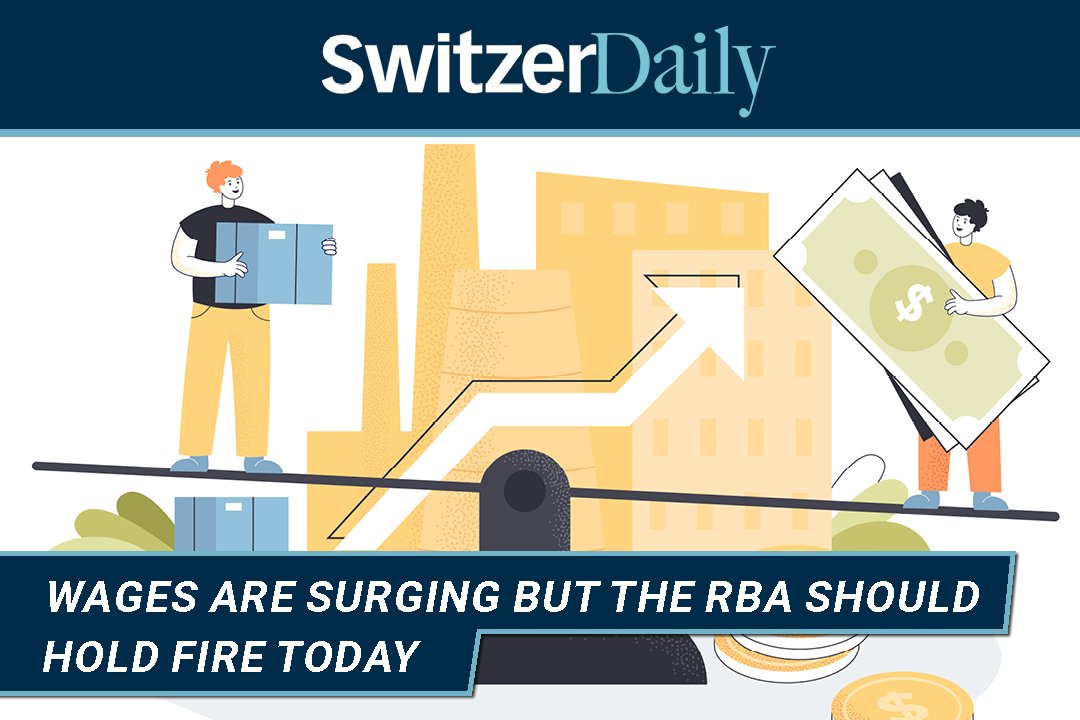

When it comes to the interest rate decision today, I look at the recent wage rises (which have been big) but I’m arguing for a pause, which really should be the end of the section for rate rises. I feel inclined to tweak the words of one of Billy Joel’s best songs. Yep, I’m prepared to sing: “I may be right, I may be crazy, but it just may be a lunatic you’re looking for!
You see, inflation is too high, and many economists are now predicting there could be one or two more rises, but many of them have been seduced into the lunatic activity of trying to guess what the Reserve Bank will do. The irony is that we economists are trained to guess/forecast where the economy is going but we’re not trained to guess what Dr Phil Lowe and his board might decide to do.
In effect, we’re being asked to be psychologists to guess what the nine people on the RBA board (the Governor, Deputy Governor, Secretary to the Treasury and six non-executive members appointed by the Treasurer) all think about inflation and how interest rate rises will work to change behaviour of Australian consumers and business.
It's a tough job and historically the Reserve Bank has a pretty good reputation but there have been times when they have over-tightened and over-loosened. The most recent case featured Dr Phil Lowe’s ‘rates won’t rise until 2024’ prediction, which might have been over-interpreted as “believe me rates won’t rise until 2024” but the big problem was he and the board should have corrected that mistaken belief in the minds of many borrowers (say in 2021), but they didn’t.
Back to the here and now, and the big problem for the Board is the surge in wages. The AFR headlined it as: “Pay rises jump by the most in 11 years.”
And this is what the newspaper’s Michael Read logically lead with: “Pay rises for workers on enterprise bargaining agreements recorded their biggest jump in 11 years, and wage growth is tipped to exceed official forecasts, maintaining pressure on the Reserve Bank to raise interest rates.”
But what’s really interesting is that the pay hikes weren’t so bad.
Here’s Read again: “Workers covered by the 841 enterprise bargaining agreements signed in the March quarter received an average annualised pay rise of 3.7 per cent, data released by the Department of Workplace Relations and Employment shows. The agreements had an average duration of 2.3 years.”
If you want an historical average pay rise number for these sorts of agreements, you’d come up with 2.7% but that’s with inflation in the 2-3% band, so a 3.7% rise with inflation recently being over 8% actually shows unions and wage earners being reasonable.
And while some economists think that this could spook the RBA to raise rates to counter the inflationary effects of these wage rises, I think if the Board keeps raising rates, many unions will demand more pay to offset the rising costs of living felt via higher loan repayments and rents.
Someone has to break the cycle that could end up being a wage-price spiral that resulted in big inflation in the 1970s and 1980s and ended up in a fair dinkum recession.
If the RBA starts raising a red flag to the bulls in the union movement with more excessive rate rises, Treasurer Jim Chalmers has to start talking and acting tough to get both the unions and the RBA to play fair and sensibly, or else we will end up in a real inflation crisis.
Also, in the AFR today, Warren Hogan (former chief economist at ANZ and now with Judo Bank) is worried about the wage rises but he thinks the RBA should pause.
Like me, Hogan knows that interest rate policy operates with long lags and reminds the Board that “if you keep tightening until you reach your goal with any certainty, then more often than not, you will have over-tightened.”
And that means recession job losses and rate cuts. He recognises the high demand for labour as shown through job ads and employment data but thinks the Albanese Government’s big drive for immigrants to bring workers has super-charged inflation because new arrivals want accommodation and want to buy ‘stuff’.
This is the way Hogan puts it: “Like dry hot winds powering a bushfire, this mighty labour demand is dangerous.”
I would argue the makings of a wage-price spiral are there and the RBA shouldn’t put more fuel on the fire by raising rates and ignoring what the mortgage cliff will do to spending and inflation.
I will give the final word to Hogan: “But if the fires of labour demand are not looking like petering out with an interest rate above 4 per cent, then the debate will not be about a 4.6 per cent or even 4.85 per cent peak cash rate; it will be about whether we are going to 5.5 per cent or something a bit higher.”
If this happens, Albo and Dr Jim will find it hard blaming the economic fallout for Aussie families and voters on Scott Morrison and his team.
For me to argue there should be no rate rise today could make me the lunatic economist that borrowers are looking for but given the Billy Joel song I referred to above comes from the album Glass Houses, I better be careful about the stones I throw at the RBA.